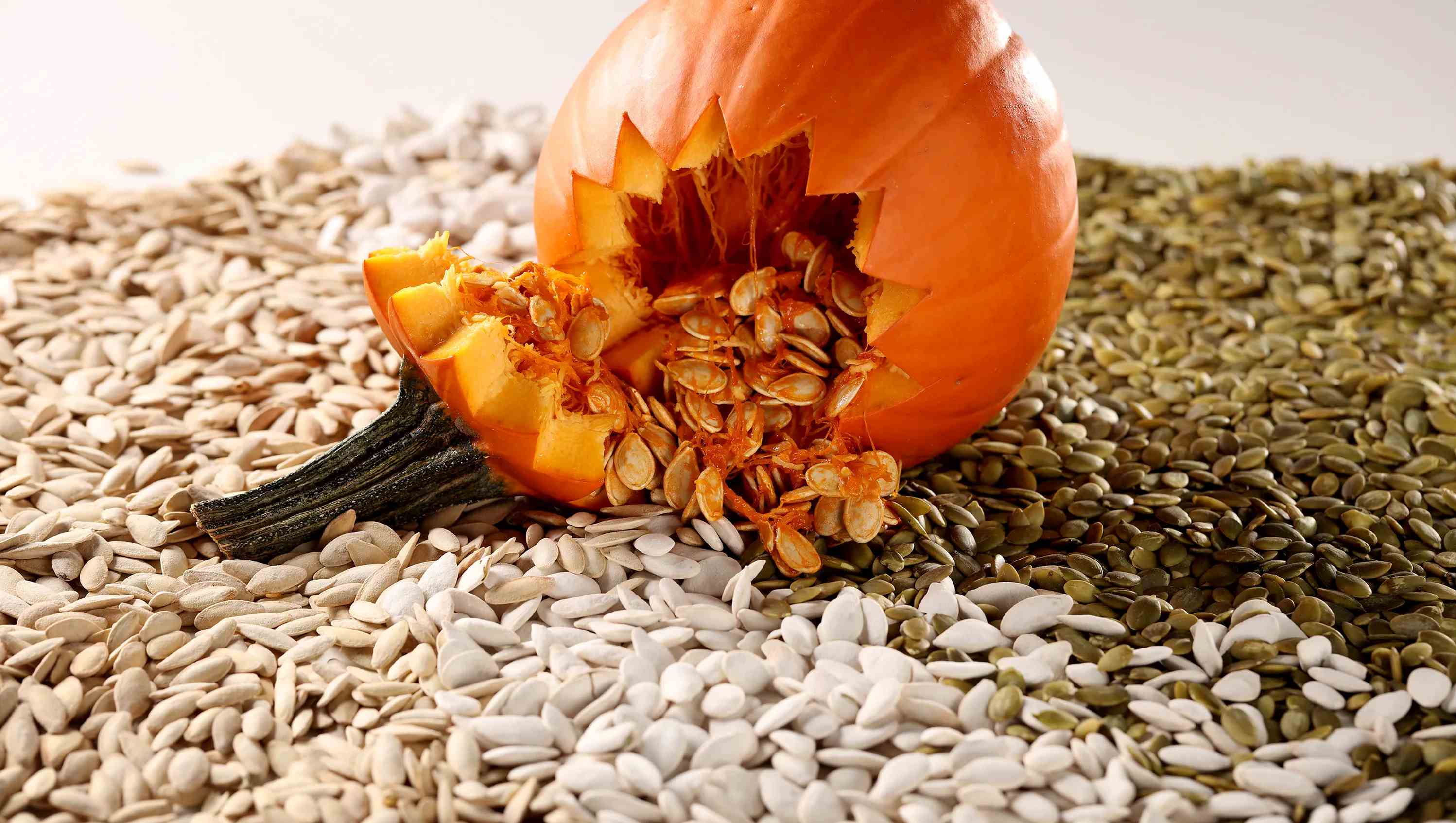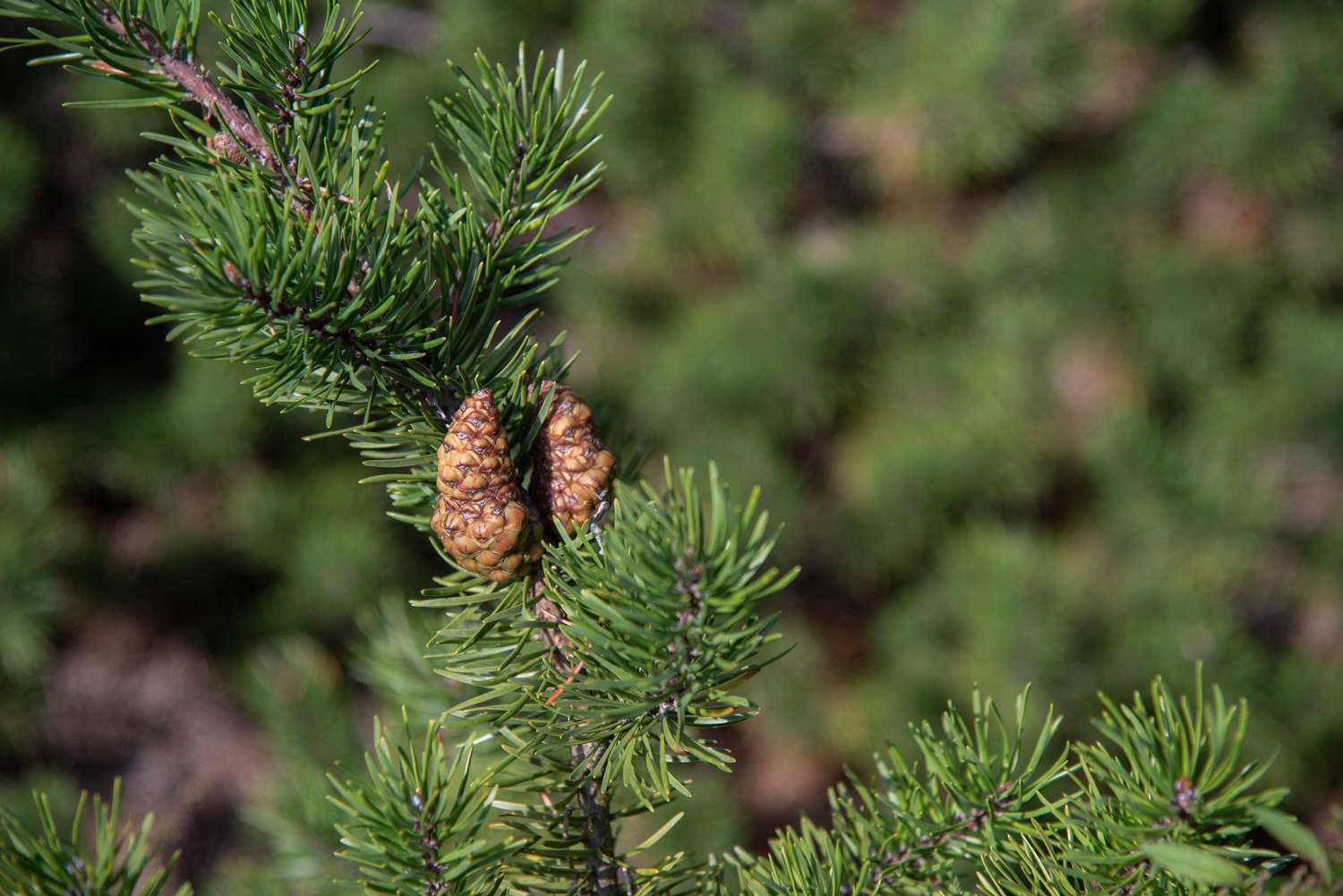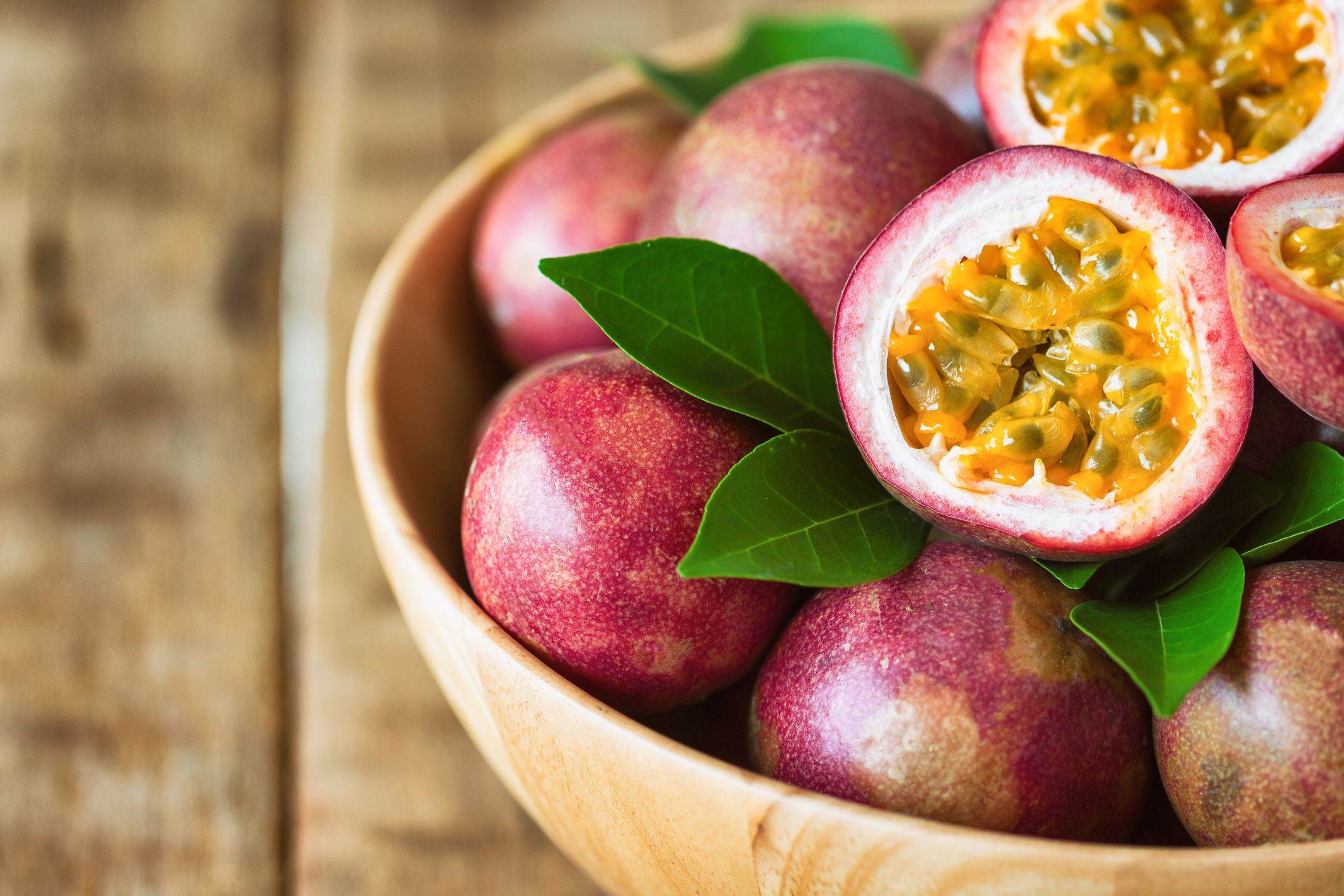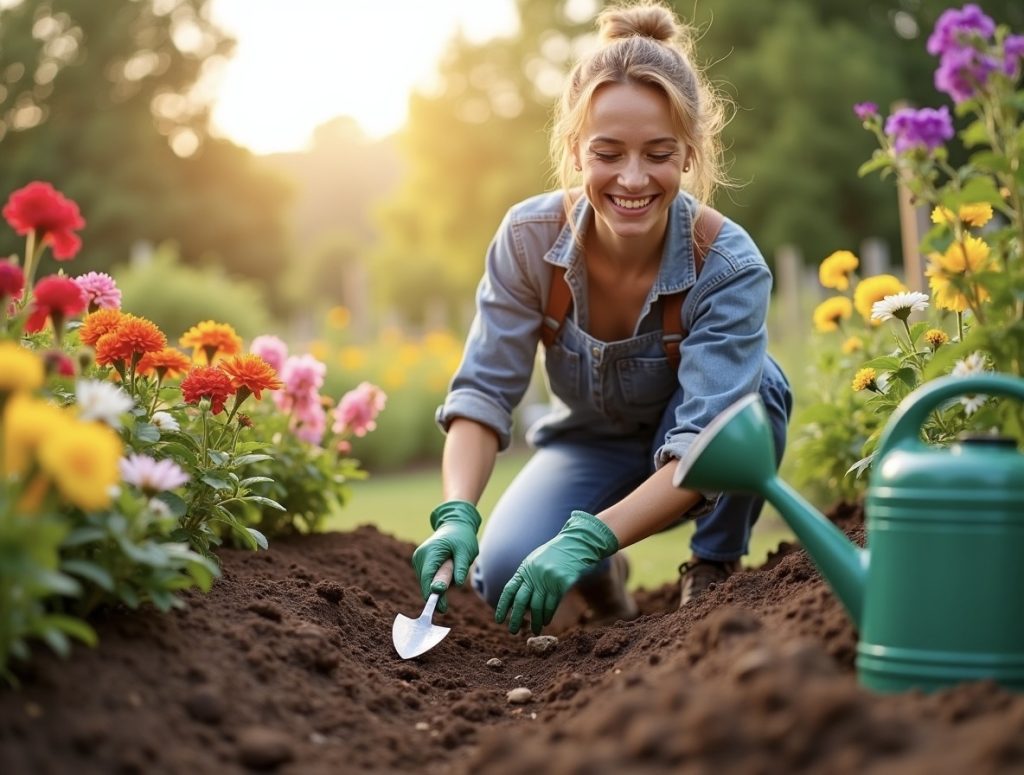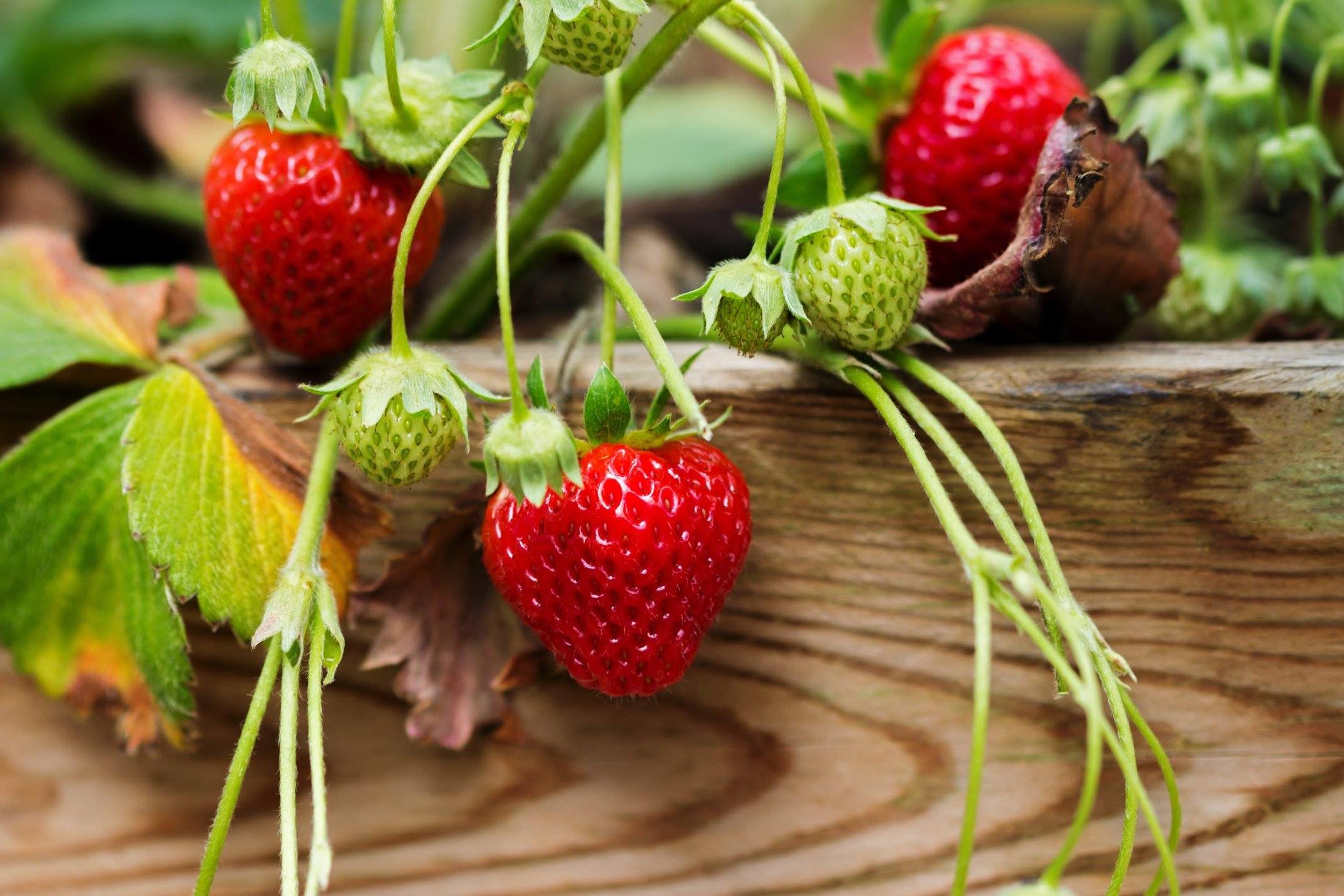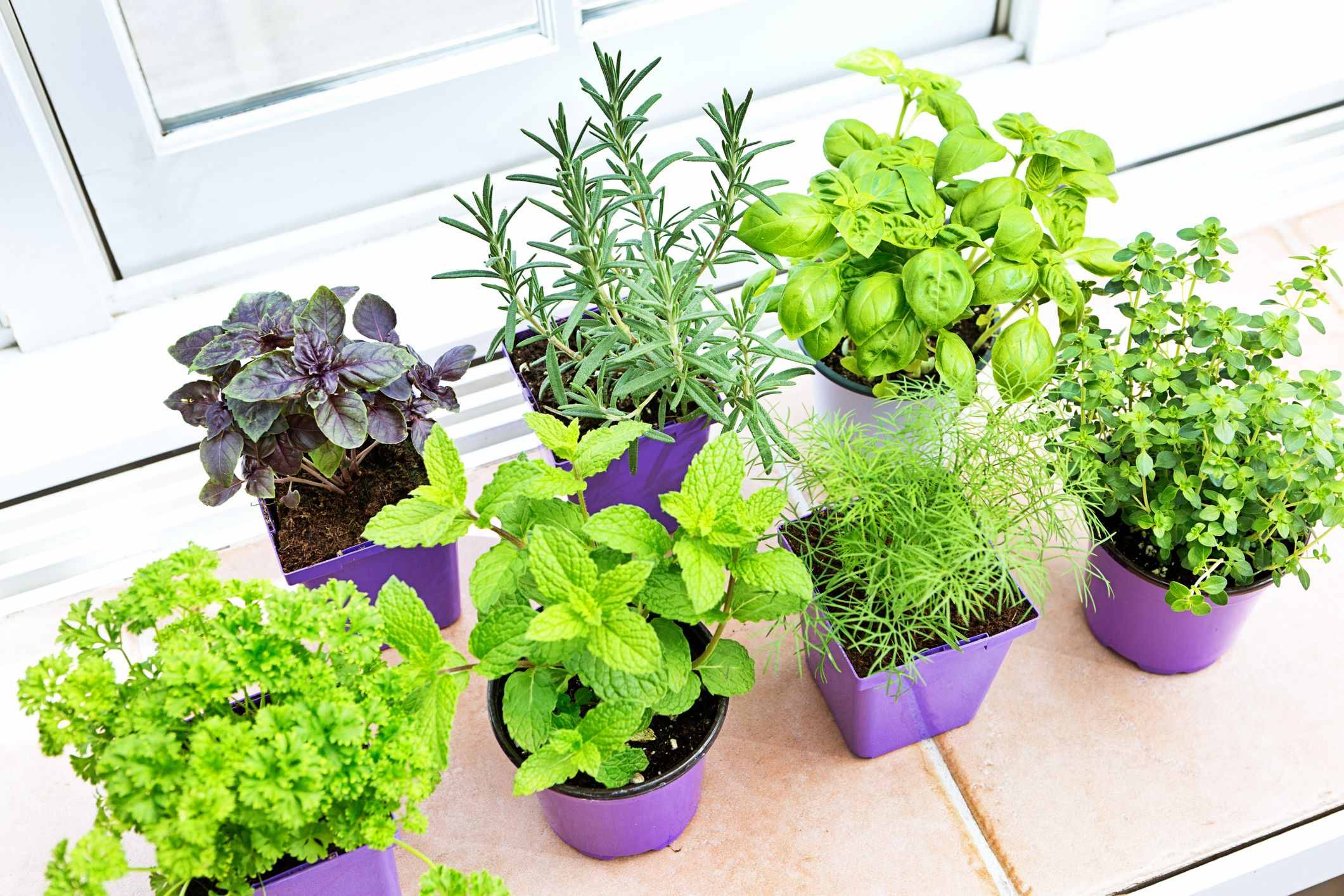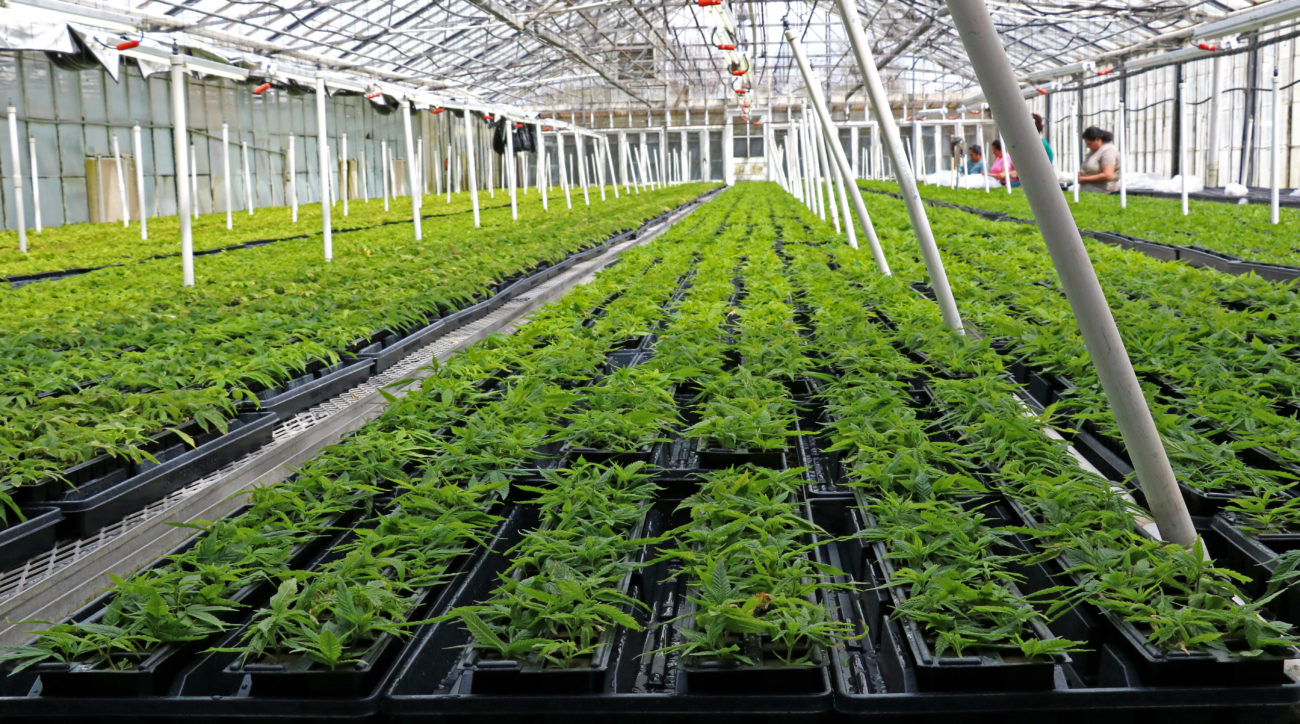Home>Types of Gardening>Ornamental Gardening>How To Grow Marijuana From Seeds


Ornamental Gardening
How To Grow Marijuana From Seeds
Modified: February 9, 2024
Learn the art of ornamental gardening with our step-by-step guide on how to grow marijuana from seeds. Cultivate beautiful and unique plants in your own garden today!
(Many of the links in this article redirect to a specific reviewed product. Your purchase of these products through affiliate links helps to generate commission for Chicagolandgardening.com, at no extra cost. Learn more)
Table of Contents
Introduction
Welcome to the fascinating world of ornamental gardening! Whether you’re an experienced gardener looking to expand your skills or a beginner eager to embark on a new hobby, this comprehensive guide will provide you with valuable information on growing and maintaining stunning ornamental gardens.
Ornamental gardening is the art of cultivating plants primarily for their aesthetic appeal. From vibrant flowers to graceful foliage, these plants add color, texture, and beauty to any garden or landscape. By carefully selecting and nurturing ornamental plants, you can create stunning displays that enhance the visual appeal of your outdoor spaces.
But ornamental gardening isn’t just about beauty. It also offers a range of other benefits. Cultivating ornamental plants can boost your mental wellbeing, provide a relaxing hobby, and create a welcoming habitat for birds, butterflies, and other pollinators. Additionally, ornamental gardens can be customized to suit various styles and preferences, from formal and structured designs to wild and naturalistic arrangements.
In this guide, we’ll cover everything you need to know to become an expert in ornamental gardening. We’ll explore the different types of ornamental plants, discuss essential gardening techniques, and provide tips for creating stunning and sustainable ornamental gardens.
Whether you’re interested in planting colorful annual flowers, fragrant herbs, or majestic ornamental trees, this guide will walk you through the process, step by step. So, let’s dive in and discover the secrets of creating a captivating ornamental garden that will delight your senses and bring you joy for years to come.
Choosing the Right Seeds
When it comes to ornamental gardening, selecting the right seeds is crucial for ensuring a successful and vibrant garden. Whether you’re sowing annuals, perennials, or flowering shrubs, here are some key factors to consider when choosing your seeds:
- Variety: There is a wide array of ornamental plant varieties available, each with its own unique characteristics and growing requirements. Consider the bloom color, height, spread, and growth habit of the plant. Think about the overall design and theme you want to achieve in your garden.
- Climate Suitability: Different plants thrive in different climates. An important aspect of choosing the right seeds is to ensure that they are suitable for your specific climate zone. Research the temperature, rainfall, and sunlight requirements of the plants you intend to grow. This will help you select seeds that will thrive in your local environment.
- Seed Quality: It’s important to choose high-quality seeds from reputable sources. Look for seeds that are fresh, properly stored, and free from disease or pests. Avoid seeds that are discolored, damaged, or have expired. High-quality seeds have a better chance of germinating successfully and producing healthy plants.
- Germination Time: Consider the germination time of the seeds. Some plants have a longer germination period, while others sprout quickly. If you’re planning a specific timeline for your garden or have limited patience, choosing seeds with a shorter germination time might be preferable.
- Availability: Some ornamental plants are readily available as seeds, while others might be more commonly found as seedlings or young plants. Determine whether you prefer to start your plants from seeds or purchase them as established plants. Keep in mind that starting from seeds can be more cost-effective but requires more time and effort.
By considering these factors, you can select seeds that are well-suited to your specific gardening goals, climate, and personal preferences. Remember to read the seed packet instructions carefully and follow the recommended planting guidelines. With the right seeds in hand, you’ll be ready to embark on your ornamental gardening journey.
Germination Process
The germination process is a critical stage in growing ornamental plants from seeds. It is the moment when the seed begins to sprout and develop into a seedling. Here are the key steps to ensure successful germination:
- Seed Preparation: Some seeds may benefit from pre-treatment methods like scarification (scratching the seed coat) or stratification (exposing the seeds to cold temperatures). These methods can help break the seed dormancy and promote better germination rates. However, not all seeds require pre-treatment, so refer to the specific seed packet instructions to determine if it’s necessary.
- Seed Sowing: Fill a seed tray or small pots with a well-draining seed starting mix. Moisten the mix slightly to provide a conducive environment for germination. Place the seeds on the surface of the soil, making sure to space them evenly. Gently press the seeds into the soil, but avoid burying them too deep.
- Moisture and Warmth: To promote germination, it’s essential to provide a consistent level of moisture and warmth. Cover the seed tray with a plastic dome or plastic wrap to create a greenhouse-like environment that retains moisture. Place the tray in a warm location, ideally between 70-75°F (21-24°C).
- Light Requirements: Not all seeds require light to germinate, but some do. Check the seed packet instructions to determine whether the seeds need light or darkness for germination. If light is necessary, simply place the tray in a bright location, but avoid direct sunlight, as it can cause overheating.
- Patience and Monitoring: Germination times vary depending on the plant species. Some seeds may sprout within a few days, while others might take weeks or even months. Be patient and avoid the temptation to disturb the seeds during this process. Regularly monitor the moisture levels and ensure the soil remains consistently damp, but not waterlogged.
Once the seeds have germinated and the seedlings have emerged, it’s time to provide them with proper care and attention to ensure healthy growth. Keep in mind that not all seeds will successfully germinate, so it’s a good practice to sow more seeds than you actually need to account for any potential failures.
By following these steps and providing the optimal conditions for germination, you’ll increase the chances of successful seedling emergence and set a strong foundation for growing vibrant ornamental plants in your garden.
Seedling Care
Once the seedlings have emerged from the soil, they require proper care and attention to ensure their healthy development. Here are some essential tips for seedling care:
- Light: Provide adequate light for the seedlings to promote healthy growth. Place them in a bright location, preferably near a window with indirect sunlight. If natural light is limited, consider using fluorescent grow lights that mimic the spectrum of natural sunlight.
- Watering: Seedlings have delicate root systems, so it’s important to water them carefully. Keep the soil evenly moist but avoid overwatering, as excessive moisture can lead to root rot. Water the seedlings from below by placing the tray or pots in a shallow tray of water and allow the soil to soak up the moisture.
- Temperature: Maintain a consistent temperature for optimal seedling growth. Most ornamental plants prefer temperatures between 65-75°F (18-24°C) during the day and slightly cooler temperatures at night. Avoid exposing the seedlings to extreme temperature fluctuations or drafts.
- Air Circulation: Proper air circulation is essential for healthy seedling development. Avoid overcrowding the seedlings, as this can promote the spread of diseases and hinder air movement. If needed, thin out the weaker seedlings to give the others enough space to grow.
- Fertilization: After the seedlings have developed their first set of true leaves, you can begin fertilizing them with a diluted, balanced liquid fertilizer. Follow the instructions on the fertilizer package and apply it once every two weeks or as recommended for the specific plant variety.
- Hardening Off: Before transplanting the seedlings into the garden, it’s important to gradually expose them to outdoor conditions. This process, known as hardening off, helps the seedlings adjust to fluctuations in temperature, wind, and sunlight. Start by placing them outdoors for a few hours each day, gradually increasing the duration over the course of a week or two.
By providing proper care during the seedling stage, you’ll encourage strong root development, sturdy stems, and healthy foliage. Remember to monitor the seedlings closely for any signs of pests, diseases, or nutrient deficiencies. Promptly address any issues to ensure the continued health and vigor of your ornamental plants.
Vegetative Stage
The vegetative stage is a critical phase in the growth of ornamental plants. During this stage, the focus is on establishing a strong root system and developing lush foliage. Here’s what you need to know to ensure successful growth during the vegetative stage:
- Lighting: Adequate lighting is crucial for promoting vigorous vegetative growth. If growing indoors, provide your plants with 14-16 hours of bright, artificial light per day. If growing outdoors, ensure they receive full sun or partial shade, depending on the specific plant’s light requirements.
- Watering: Consistent and regular watering is essential for healthy vegetative growth. Water the plants deeply, allowing the soil to become evenly moist but not waterlogged. Avoid letting the plants sit in standing water, as this can lead to root rot.
- Fertilization: Supply the plants with a balanced liquid fertilizer during the vegetative stage to support their growth. Choose a fertilizer specifically formulated for ornamental plants and follow the manufacturer’s instructions for application rates and frequencies.
- Pruning and Trimming: Regular pruning and trimming help promote bushier growth and maintain the desired shape of the plants. Remove any dead, damaged, or diseased foliage, and pinch back the tips of the plants to encourage branching and denser growth.
- Support and Training: Some ornamental plants, such as climbing vines or tall perennials, may require support or training to prevent them from sprawling or falling over. Use trellises, stakes, or plant supports to guide their growth and maintain their aesthetic appeal.
- Pest and Disease Management: Monitor the plants regularly for any signs of pests or diseases. Common pests in the vegetative stage include aphids, caterpillars, and spider mites. Employ organic pest control methods or use insecticidal soaps if necessary.
- Weed Control: Keep the planting area free from weeds that compete with the ornamental plants for nutrients and resources. Regularly remove any weeds that appear and use mulch to help suppress weed growth and conserve soil moisture.
The vegetative stage is an exciting time as you witness your ornamental plants grow and thrive. By providing the right conditions, such as proper lighting, watering, and fertilization, as well as taking care of pruning, support, and pest management, you’ll set the stage for healthy and vibrant plants.
Flowering Stage
The flowering stage is perhaps the most anticipated and visually rewarding phase in ornamental gardening. This is the time when your plants burst into a colorful display of blossoms. Here’s how to ensure a successful flowering stage:
- Lighting: Proper lighting is crucial for promoting optimal flower production. Ensure that your plants receive adequate sunlight or provide them with the appropriate intensity and duration of artificial light if growing indoors. Insufficient light may result in fewer blooms or weaker flowers.
- Watering: During the flowering stage, it’s important to maintain consistent moisture levels in the soil. Water deeply and thoroughly whenever the top inch of soil feels dry. Be careful not to overwater, as excessive moisture can lead to root rot and negatively impact flower development.
- Fertilization: Continue to provide your plants with a bloom-specific fertilizer during the flowering stage. These fertilizers are typically higher in phosphorus, which promotes flower production. Follow the package instructions for application rates and frequency to avoid overfertilization.
- Deadheading: Regular deadheading, which is the removal of spent flowers, encourages continued blooming and overall plant health. By removing faded blooms, you redirect the plant’s energy towards producing new flowers instead of seed production.
- Support: Some flowering plants, such as tall perennials or heavy-headed flowers, may require additional support to prevent them from bending or toppling over. Use stakes, cages, or other supports to help keep the plants upright and showcase their blooms effectively.
- Pest and Disease Management: Monitor your plants for any signs of pest infestations or diseases during the flowering stage. Common pests, such as aphids and powdery mildew, can impact flower quality and overall plant health. Address these issues promptly using organic pest control methods.
- Enjoy the Blooms: Take the time to appreciate and enjoy the beautiful blooms in your ornamental garden. Cut and display fresh flowers in vases to bring their beauty indoors. Observe the different colors, shapes, and fragrances that each plant offers, and take pride in the success of your hard work.
The flowering stage is the payoff for your efforts in ornamental gardening. By providing the right conditions, including proper lighting, watering, fertilization, and pest management, you’ll be rewarded with stunning displays of blooms that will add beauty and vibrancy to your garden.
Harvesting and Drying
When it comes to ornamental gardening, harvesting and drying is not just reserved for edible crops. Many ornamental plants produce seeds, flowers, or foliage that can be harvested and preserved for various purposes. Here’s how to harvest and dry your ornamental plants:
- Seed Harvesting: If your ornamental plants produce seeds, allow the seed heads to fully mature and dry on the plant. Once the seeds are dry, collect them by gently shaking or rubbing the seed heads. Place the seeds in a dry container or envelope and store them in a cool, dry place until you’re ready to use or share them.
- Flower Harvesting: Harvesting flowers from your garden allows you to create beautiful arrangements or preserve them for decorative purposes. Choose flowers that are fully open but not yet wilted, and cut the stems at an angle using sharp, clean shears. Place the cut flowers immediately in a bucket of water to keep them hydrated.
- Drying Flowers: Preserve the beauty of your ornamental flowers by drying them. Hang the flowers upside down in a warm, dry place with good air circulation. This allows the flowers to dry naturally and retain their shape and color. Once fully dried, the flowers can be used in wreaths, potpourri, or as decorative elements in crafts.
- Foliage Drying: Some ornamental plants have attractive foliage that can be dried and used for various purposes. Choose healthy leaves without any signs of disease or damage. Lay the leaves in a single layer on a drying rack or a screen and place them in a warm, well-ventilated area. After a few weeks, the foliage should be fully dried and ready to be used in arrangements or crafts.
- Preservation Techniques: Apart from drying, there are other preservation techniques you can use to extend the lifespan of your ornamental plants. One popular method is pressing flowers between heavy books or using a flower press. Another option is using silica gel or desiccant crystals to dry flowers more quickly while preserving their shape and color.
- Storage: Once your ornamental plants are harvested and dried, it’s important to store them properly to maintain their quality. Store dried flowers, seeds, or foliage in airtight containers or sealed plastic bags in a cool, dark place. This helps to prevent humidity, moisture, or pests from damaging your precious harvest.
Harvesting and drying ornamental plants allow you to enjoy their beauty long after they have finished blooming. Whether you’re preserving seeds for future planting, creating dried flower arrangements, or using dried foliage in your crafts, these techniques give you the opportunity to extend the life and usefulness of your ornamental garden.
Tips for Successful Seed Growth
Growing plants from seeds can be a rewarding and cost-effective way to enhance your ornamental garden. To ensure successful seed growth, here are some valuable tips to follow:
- Read the Instructions: Before planting any seeds, thoroughly read the instructions on the seed packet. Pay attention to the recommended planting depth, spacing, and any specific requirements for that particular plant species.
- Select Quality Seeds: Choose high-quality seeds from reputable suppliers. Look for seeds that are fresh, properly stored, and labeled with their germination rates. Avoid purchasing seeds that are expired, damaged, or of uncertain origin.
- Provide Adequate Light: Most seeds require sufficient light to germinate and grow. Ensure that your seedlings receive at least 12-16 hours of bright, indirect light per day. If growing indoors, consider using fluorescent or LED grow lights to supplement natural light.
- Use Quality Seed Starting Mix: Use a well-draining, sterile seed starting mix to provide the ideal growing medium for your seeds. Avoid using regular garden soil, which may contain pests, diseases, or inadequate drainage that can hinder seed germination and growth.
- Maintain Proper Moisture Levels: Keep the soil consistently moist, but not waterlogged, during the germination and early growth stages. Avoid overwatering, as excessive moisture can lead to damping-off disease, root rot, or poor growth. Use a spray bottle or a misting attachment to water gently.
- Protect Seedlings from Extreme Temperatures: Keep seedlings away from extreme temperature fluctuations, both hot and cold. Maintain a temperature range of 65-75°F (18-24°C) during the germination and seedling stage to promote healthy growth.
- Harden Off Seedlings: Prepare your seedlings for transplantation by gradually exposing them to outdoor conditions. This process, known as hardening off, helps them adapt to fluctuating temperatures, wind, and direct sunlight. Begin with a few hours outdoors and gradually increase the duration over a week or two.
- Thin Out Crowded Seedlings: If seedlings become overcrowded, thin them out to provide enough space for healthy growth. Remove weaker or excess seedlings, allowing the remaining ones to receive adequate airflow and light. Thinning helps prevent competition for resources and minimizes the risk of disease spread.
- Monitor and Control Pests: Regularly monitor your seedlings for any signs of pests, such as aphids, mites, or fungal infections. Employ appropriate pest management techniques, such as organic insecticidal soap or beneficial predators, to prevent damage to your seedlings.
- Transplant Carefully: When it’s time to transplant your seedlings into the garden, handle them gently to minimize root disturbances. Dig a hole slightly larger than the root ball and ensure that the soil is well-prepared and adequately moist. Provide support, such as stakes or trellises, for tall or climbing ornamental plants.
By following these tips, you’ll give your seeds the best possible start and maximize the chances of successful germination and healthy plant growth. Remember to be patient, as not all seeds germinate at the same speed, and different plants have varying requirements. Enjoy the process and watch your ornamental garden flourish from seeds to stunning plants.
Conclusion
Ornamental gardening offers a world of beauty, creativity, and fulfillment. By selecting the right seeds, mastering the germination process, and providing proper care throughout each growth stage, you can create a breathtaking ornamental garden that brings joy to both you and those who admire it.
Choosing the right seeds is the first step towards a successful ornamental garden. Consider factors such as variety, climate suitability, seed quality, germination time, and availability to ensure that your chosen seeds align with your garden vision and thrive in your local environment.
The germination process requires patience and attention to detail. By properly preparing and sowing your seeds, maintaining the right moisture and warmth levels, and providing adequate light, you are setting the stage for successful seedling emergence and healthy plant growth.
Seedling care is essential for cultivating sturdy plants. Pay attention to lighting, watering, temperature, air circulation, and fertilization to foster strong root systems and lush foliage. Regular pruning and support will contribute to bushier growth and maintain the desired shape of your ornamental plants.
The flowering stage is the moment of reward for your dedication and efforts. With proper lighting, watering, fertilization, and pest management, you can witness your garden burst with vibrant blooms that bring color and life to your outdoor spaces.
As you progress in your ornamental gardening journey, don’t forget the importance of harvesting and drying. Whether it’s collecting seeds for future planting or preserving the beauty of flowers and foliage, these techniques allow you to extend the lifespan of your plants and continue to enjoy their splendor even after they have finished blooming.
In conclusion, ornamental gardening is a blend of artistry, science, and patience. With the knowledge and tips shared in this guide, you are equipped to create a stunning and thriving ornamental garden. Embrace the creative possibilities, adapt as needed, and revel in the joy of watching your plants grow and flourish. Happy gardening!
